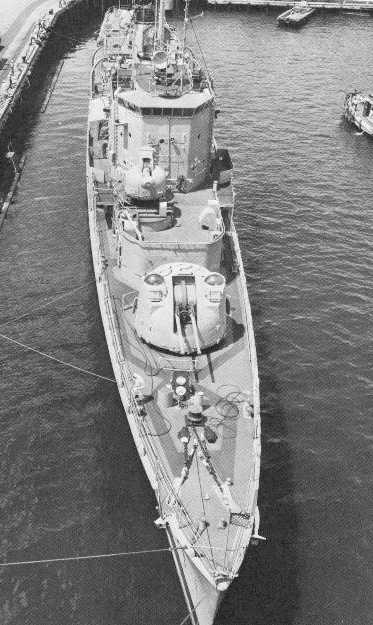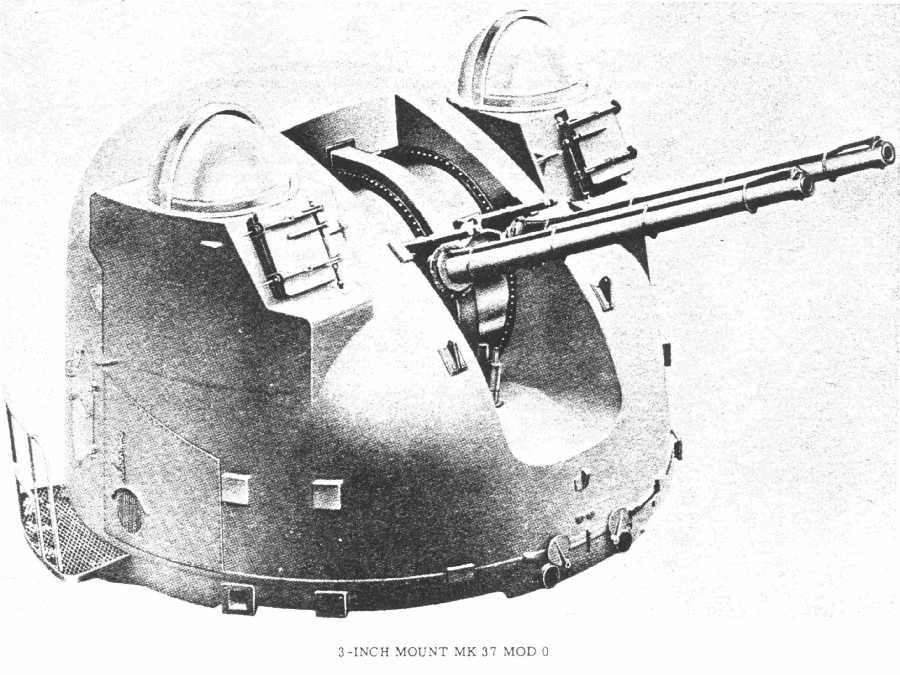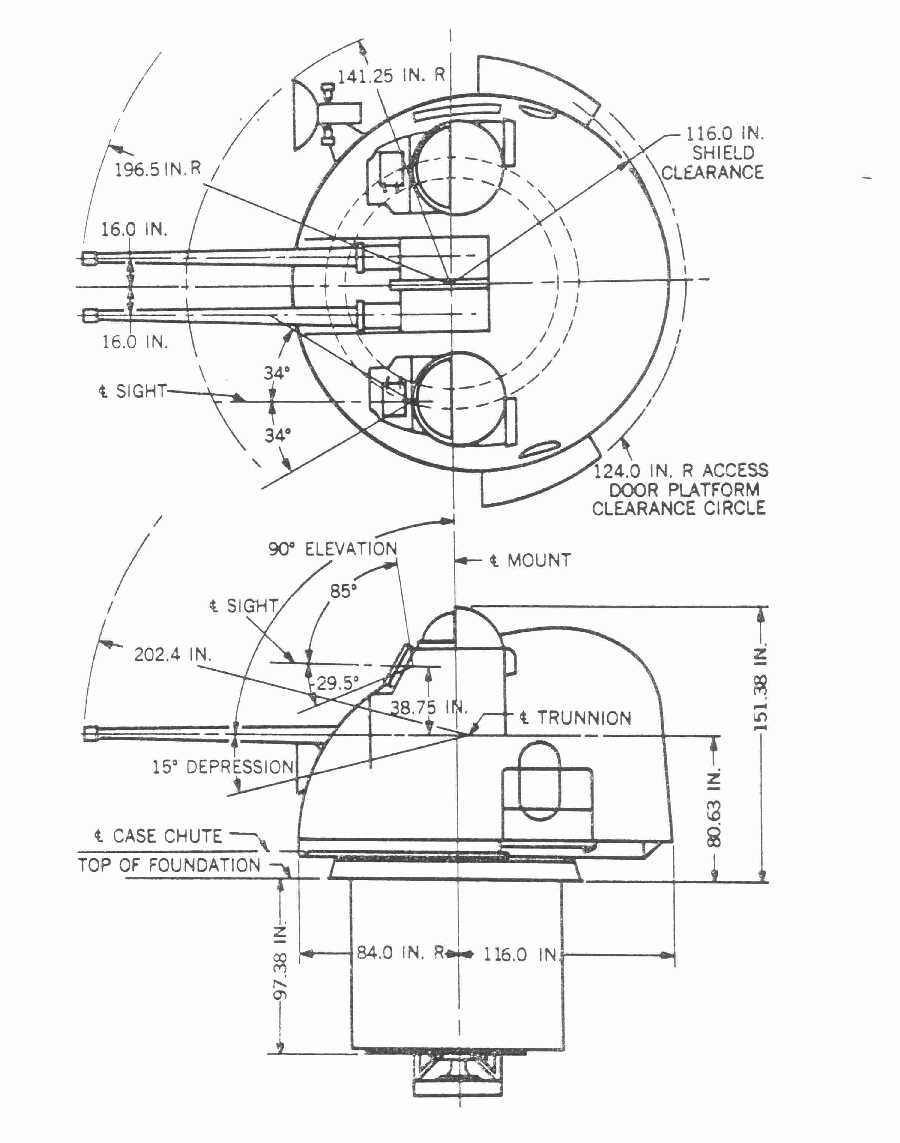|
The development of the ammunition and water-cooled barrel was a joint British-American project, but each navy designed a completely different gun mounting, with the British one being the 3"/70 (7.62 cm) Mark VI. This twin mount was intended to replace the older 5"/38 (12.7 cm) Mark 12 mounts on a one-for-one basis and to become the standard weapon for post-war destroyers. However, its complex nature resulted in a long development cycle and by the time it was ready for service use in 1956 the usefulness of antiaircraft shellfire was limited. In addition, the mounting proved to be so unreliable and hard to maintain that it was quickly withdrawn from duty and may have had the shortest service life of any weapon system ever used by the US Navy. It has been said that the only advantage of this mounting was that the gun shield let you work on them out of the weather. Most mounts were replaced within a few years with other weapons and the only US warship to retain the 3"/70 (7.62 cm) to the end of her career was USS Norfolk (DL-1). As per the nomenclature change in the US Navy after World War II, the Mark 37 designation was for the mounting, not the gun itself. The gun went through four major revisions. The Mark 23 was a prototype used to test the operation of fully-automatic firing. The Mark 24 was similar but slightly lighter. The Mark 25 used a rapid-fire horizontal-wedge breech. The Mark 26 was the service version and was a water cooled monobloc type with a horizontally sliding breech mechanism. The barrel on this last Mark had a three caliber smoothbore section near the muzzle (Probertised) to reduce loss of velocity and to act as a flash suppresser. The breechblock opened mechanically as the gun recoiled and closed automatically as soon as the next round was loaded. The barrel is attached to the breech ring by interrupted threads (bayonet joint) and can be removed without dismounting the gun. Two mountings from USS Norfolk (DL-1) still survive and are on display at the Boca Raton Community High School in Florida, USA. |

USS Carpenter DDE-825 |

Note the water hoses for the cooling jackets and the two case ejection ports at the bottom front of the mounting |

Dimensional Drawing of Mark 37 Mod 0 |